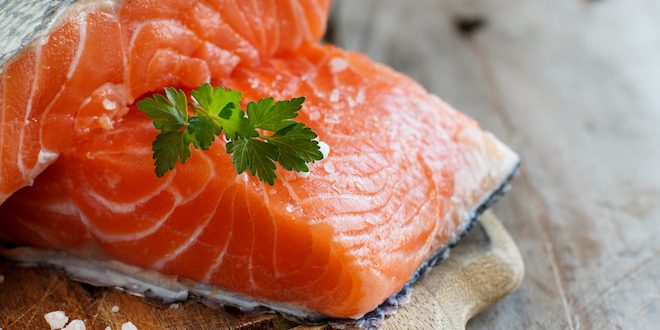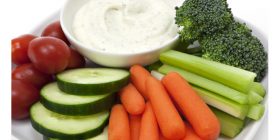Grocery store shopping may seem like one of those chores on your weekly “to do” list, like doing laundry or mowing the lawn. But unlike other weekly tasks, grocery shopping is one of the most important things you can do for your health. That’s because what you buy during your trip to the grocery store has a major impact on what you’ll eat during the week.
Continuing our series of navigating the grocery store, in this blog post we’ll explore seafood. If the seafood department of your grocery store is not already a regular stop during your grocery shopping trip, there are plenty reasons why you may want to spend some time exploring it the next time you’re there. However, if seafood makes a regular appearance on your grocery list, that’s great news! Seafood, which includes fish and shellfish, has important health benefits. In fact, numerous studies have shown that people who eat fish regularly are less likely to have heart disease.
Still, you may wonder if you are making the healthiest choices. Besides being a good source of protein, fish is low in saturated fat. Including more fish into your weekly menu means that you are replacing it with other protein sources that may be higher in saturated fat, and therefore less healthy. Any fish is better than no fish, but some choices are more heart-friendly than others, because they contain omega-3 fatty acids. The key is to find one (or many!) that you like.
Eating Well with Canada’s Food Guide recommends eating one serving of fish (particularly oily fish) at least two times a week. Some examples of oily fish include salmon, mackerel, sardines, herring, mussels, trout and oysters. One serving of cooked fish is about 3.5 ounces (the size of the palm of your hand).
Fresh, frozen or canned?
The most important thing is to buy fish that you’ll enjoy eating. As with any other foods, compare the Nutrition Facts information, and choose products with the lowest amounts of saturated fat and sodium.
Fresh
If possible, purchase fresh fish and seafood the day you plan to cook it. Fresh fish should be firm, and the flesh should spring back when it is touched. The fish should have only a slightly salty or freshwater scent, and not a strong “fishy” smell. Avoid buying seafood that has been in the grocery store case for too long – be sure to check the date that it was packaged.
Fresh seafood may have seasons of availability, and there may be price fluctuations that affect your decision to have two servings each week. If price is an issue, frozen or canned fish can be just as healthy as fresh fish, if you keep a few key points in mind.
Frozen
When purchasing frozen seafood, avoid breaded fish and fish with added sauces. These generally have added calories, sodium and saturated fat. Individually frozen fish fillets have the advantage of allowing you to defrost just what you need for one meal. Once thawed, avoid re-freezing fish; it should be cooked immediately.
Canned
Canned seafood offers a quick and easy solution for on-the-go meals, or for those days when you’re just too busy to plan a meal. The health benefits of canned seafood are equal to those of fresh seafood. Canned options found in the grocery aisles are also of good value, easy to find, can be kept on hand in the pantry, and the quality is always consistent. Be sure to stock up when they’re on sale! The sodium content of canned seafood can be reduced by rinsing and draining it before using.
The next time you’re at the grocery store, spend a few extra minutes exploring the seafood department and the shelves of canned fish. You’ll find heart-healthy choices that are not only delicious, convenient and quick to prepare, they’ll also reduce your consumption of other, less-healthy, proteins.
To learn about other healthier choices while food shopping, check out Navigating the grocery store expert blogs by Dietitian and Certified Diabetes Educator, Joanne Lewis.
 Diabetes Care Community Learn, connect and care
Diabetes Care Community Learn, connect and care





